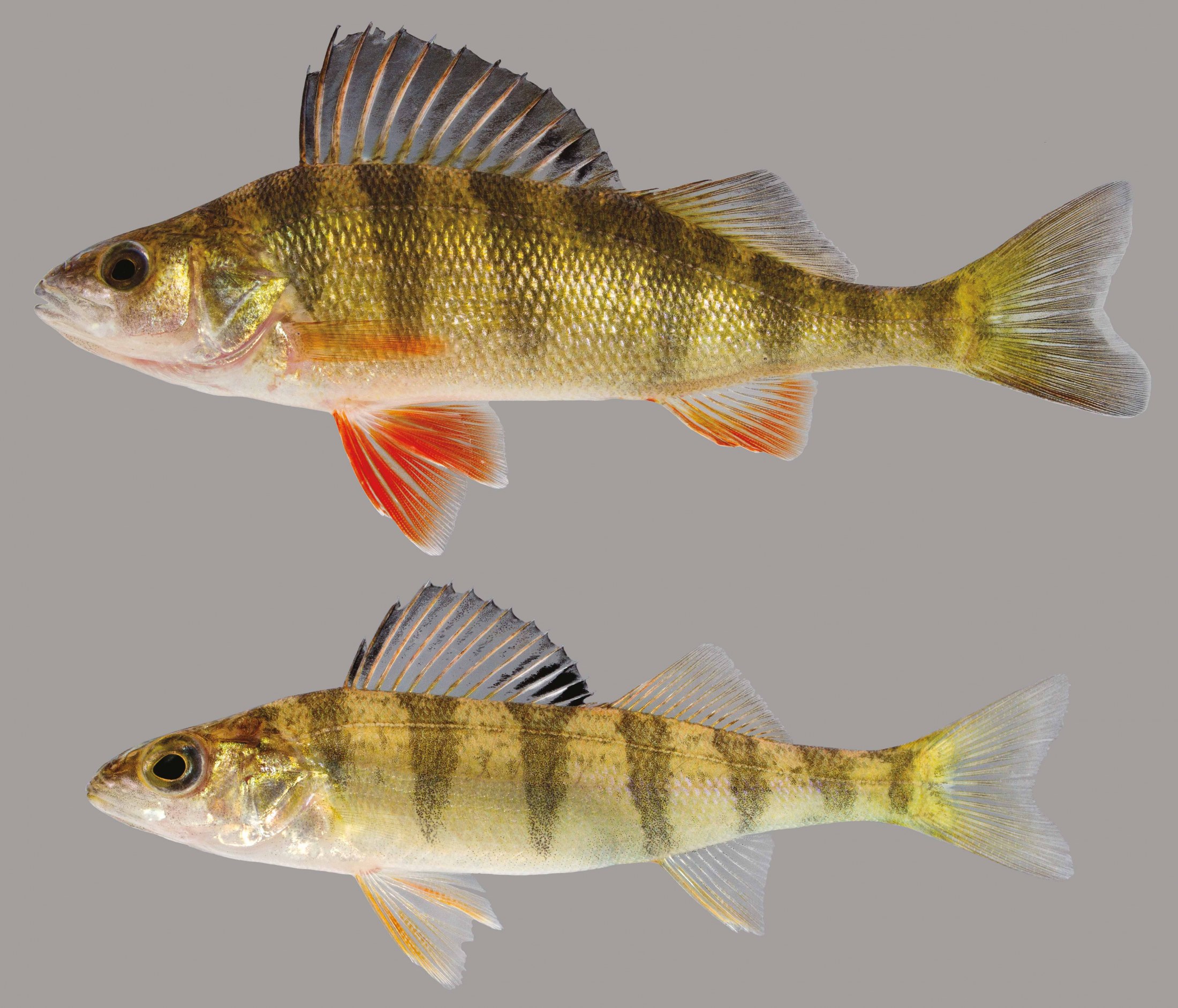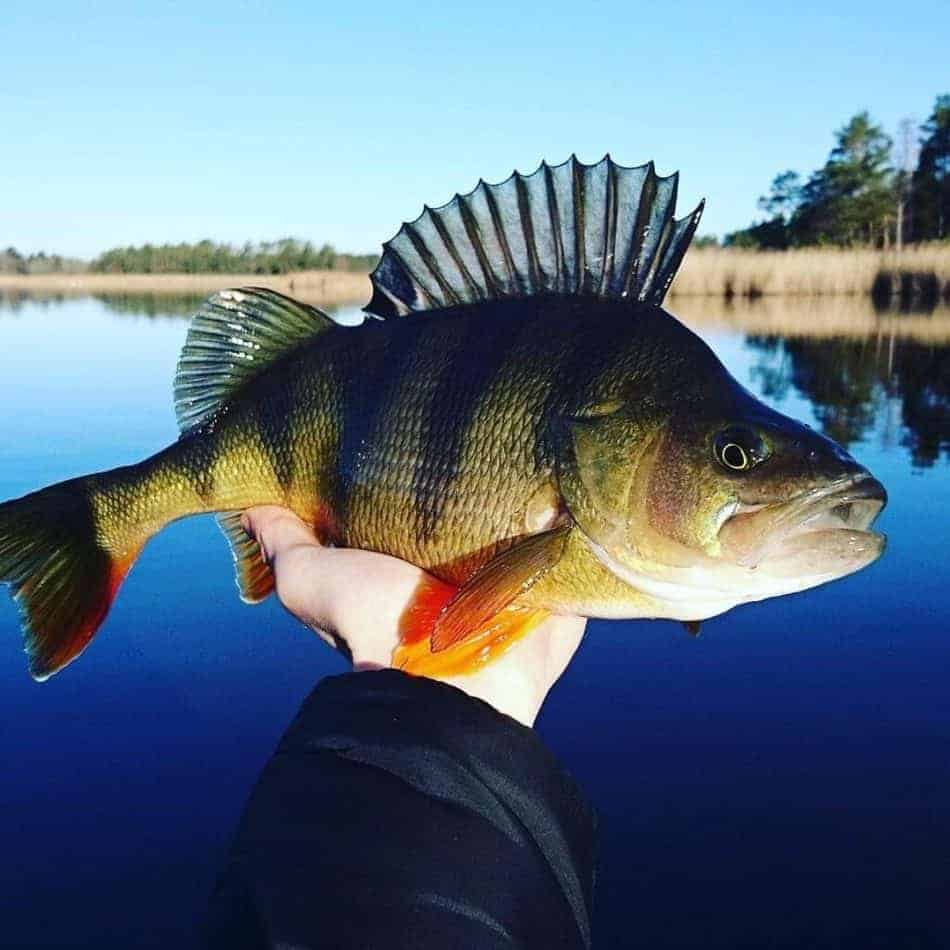Perch Fish Biology
Perch fish, belonging to the family Percidae, are a group of freshwater fish species that are widely distributed across the Northern Hemisphere. These fish are known for their distinctive physical characteristics, including their spiny dorsal fins and colorful bodies. They play a significant ecological role in their respective ecosystems and are often targeted by recreational anglers due to their abundance and sporting qualities.
Physical Characteristics, Perch fish
Perch fish typically have a slender, elongated body with a slightly compressed shape. Their heads are relatively large and feature a protruding lower jaw, which is a characteristic adaptation for feeding on smaller fish. The dorsal fin of perch fish is composed of two distinct parts: a spiny anterior section and a soft posterior section. The anal fin is also divided into two parts, with the anterior portion containing three spines. Perch fish exhibit a wide range of coloration, varying from silvery-white to dark green or brown, with many species displaying vibrant patterns of spots or stripes.
Habitat and Distribution
Perch fish are primarily found in freshwater habitats, including lakes, rivers, streams, and ponds. They prefer areas with clear water, ample vegetation, and a moderate flow rate. Perch fish are highly adaptable and can tolerate a wide range of environmental conditions, including varying water temperatures and pH levels. They are commonly found in both shallow and deep waters, and some species have even been known to inhabit brackish water environments. The geographic distribution of perch fish spans across the Northern Hemisphere, with different species inhabiting specific regions. For example, the yellow perch (Perca flavescens) is native to North America, while the European perch (Perca fluviatilis) is found throughout Europe and Asia.
Feeding Habits and Diet
Perch fish are opportunistic predators that feed on a variety of aquatic organisms. Their diet primarily consists of smaller fish, but they will also consume insects, crustaceans, and other invertebrates. Perch fish are known to be ambush predators, often lying in wait for their prey before launching a quick attack. They have sharp teeth that are well-suited for seizing and holding onto their slippery prey. The feeding habits of perch fish can vary depending on their size and the availability of food sources in their habitat. Larger perch fish tend to target larger prey, while smaller perch fish may focus on smaller invertebrates.
Perch Fish Angling

Perch are a popular target for anglers because they are relatively easy to catch and can be found in a variety of habitats. They are also a good eating fish, with a mild flavor and firm texture.
There are a number of different techniques that can be used to catch perch, but the most common is baitcasting. Baitcasting involves using a spinning reel and a live or artificial bait. Live bait, such as minnows or worms, is often the most effective, but artificial baits, such as crankbaits or jigs, can also be effective.
When baitcasting for perch, it is important to use a light line and a small hook. This will help to keep the bait close to the bottom, where the perch are most likely to be found. It is also important to be patient, as perch can be slow to bite.
Choosing the Right Bait
The best bait for perch will vary depending on the time of year and the location you are fishing. In general, live bait is more effective than artificial bait, but artificial bait can be more convenient.
Some of the best live baits for perch include:
* Minnows
* Worms
* Crayfish
* Insects
Some of the best artificial baits for perch include:
* Crankbaits
* Jigs
* Spoons
* Spinnerbaits
Effective Fishing Methods
There are a number of different fishing methods that can be used to catch perch. Some of the most effective methods include:
* Baitcasting
* Jigging
* Trolling
* Ice fishing
Perch Fish Cuisine

Perch fish, known for their delicate flavor and versatility in the kitchen, hold a significant place in culinary traditions worldwide. Their firm, flaky texture and mild taste make them a favorite among anglers and food enthusiasts alike.
From simple pan-frying to intricate culinary creations, perch fish offer a wide range of cooking possibilities. Their culinary value extends beyond their taste, as they are also a rich source of essential nutrients.
Cooking Methods
Perch fish can be prepared using various cooking methods, each highlighting their unique flavors and textures.
– Pan-frying: A classic method that creates a crispy exterior and tender interior. Season the fish with salt, pepper, and your favorite herbs before pan-frying in hot oil or butter.
– Baking: Baking perch fish results in a moist and flaky texture. Preheat your oven to 400°F (200°C) and bake the fish for 15-20 minutes, or until cooked through.
– Grilling: Grilling perch fish imparts a smoky flavor and grill marks. Brush the fish with olive oil, season with your favorite spices, and grill over medium heat for 5-7 minutes per side.
– Steaming: Steaming is a healthy cooking method that preserves the delicate flavor of perch fish. Place the fish in a steamer basket over boiling water and steam for 8-10 minutes, or until cooked through.
Nutritional Benefits
In addition to their culinary appeal, perch fish offer a range of nutritional benefits:
– Rich in Omega-3 Fatty Acids: Perch fish are a good source of omega-3 fatty acids, which are essential for heart and brain health.
– High in Protein: Perch fish is a high-protein food, providing essential amino acids for muscle growth and repair.
– Good Source of Vitamins and Minerals: Perch fish contains vitamins A, D, and B12, as well as minerals like potassium, selenium, and zinc.
Like the sleek perch fish that darts through the depths of the ocean, the term “perch” also finds its place in the world of basketball. Perch in basketball refers to a specific position on the court, where players hover near the basket, ready to grab rebounds or score easy layups.
Just as the perch fish’s agility helps it evade predators, the basketball player who masters the art of “perching” can become a formidable force on the court.
Like the perch fish that darts through the water, the lift in basketball is an agile maneuver that elevates players above the competition. This technique, lift basketball meaning , involves a player jumping off one foot while simultaneously pushing off the ground with the other, propelling them upward for a layup or dunk.
Just as the perch fish uses its fins to navigate the depths, the lift in basketball allows players to soar through the air and dominate the court.
Perch fish, with their delicate scales and spiny fins, are a sight to behold. But did you know that the term “perch” also has a place in the world of basketball? Perch in basketball refers to a particular type of shot where a player jumps and extends their arm towards the basket, resembling the graceful movement of a perch fish as it leaps from the water.
And just like the perch fish that darts through the water, a well-executed perch shot can effortlessly find its way through the hoop.
In the serene waters of the river, perch fish darted gracefully, their silvery scales shimmering like a thousand tiny stars. Yet, in the realm of sports, a different kind of pike soared high, not in the water but on the court.
The term “pike basketball meaning” reveals a fascinating concept where a player leaps effortlessly, soaring above the competition like a majestic eagle. As the perch fish continued their aquatic ballet, the court echoed with the thunderous sound of a basketball being slammed through the hoop, a testament to the athleticism and skill that defined both the underwater and on-court realms.
The perch fish, a vibrant denizen of freshwater streams, often falls prey to the menacing pike. The pike, a voracious predator defined by its elongated, torpedo-shaped body and formidable teeth ( pike definition ), poses a significant threat to perch populations.
Despite their vulnerability to these aquatic hunters, perch fish remain a resilient species, their adaptability and abundance ensuring their continued presence in freshwater ecosystems.